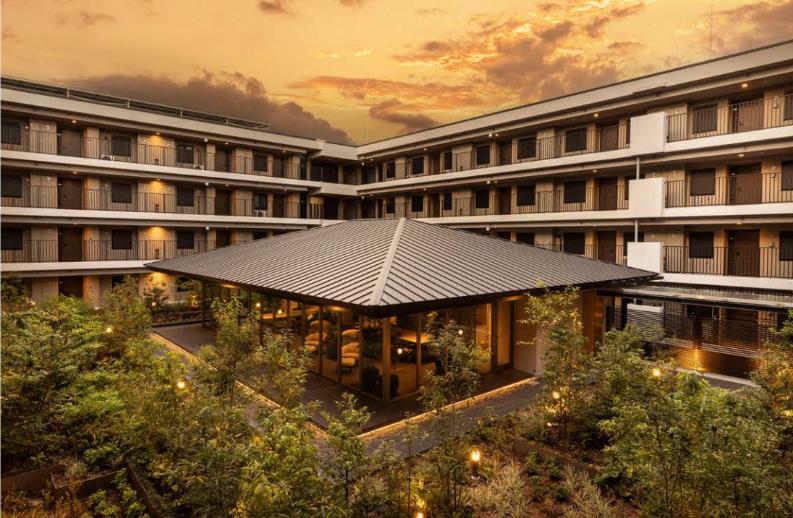“BRANZ Fushimi-Momoyama,” the first condominium in Kyoto to incorporate biophilic design supervised by Hibiya-Kadan Co., has been completed. This eco-friendly condominium integrates natural materials and greenery into its design, offering residents a calming and focus-enhancing environment. The property also features solar panels and rooftop greening, demonstrating a strong commitment to sustainability and providing a home that looks toward a future in harmony with nature.

A Fusion of Connection with Nature and Advanced Environmental Technologies in Condominium Living
“BRANZ Fushimi-Momoyama” is the first condominium in Kyoto to adopt biophilic design, an architectural approach that incorporates elements of nature into living spaces to create harmony between the environment and human life. This design trend has gained particular attention in Western countries in recent years. The lounge offers views of the lush Owner’s Garden courtyard, while the interior spaces are adorned with houseplants and natural materials, providing residents with a sense of peace and tranquility.
Hibiya-Kadan, a long-established floral company founded in 1872, has earned a strong reputation for its space designs incorporating flowers and greenery. For this project, they introduced a biophilic design concept centered on creating “a lounge where residents can focus on teleworking or enjoy reading in a nature-immersed setting.” This approach is expected to alleviate stress and promote mental well-being for those living in the condominium.
At the same time, “BRANZ Fushimi-Momoyama” is equipped with a wide array of advanced environmental technologies that support a sustainable future. The building has been certified as a Low-Carbon Building, offering residents reduced energy costs and tax benefits. Solar panels installed on the rooftop supply electricity to the common areas, contributing to the reduction of CO2 emissions.
Additionally, rooftop greening has been implemented, reflecting sunlight to help reduce indoor temperatures while also preserving biodiversity and enhancing mental relaxation through increased greenery visibility. In terms of disaster preparedness, the solar panels and battery storage system ensure that lighting in common areas like hallways and lounges remains operational during power outages, making the building resilient in emergencies.
